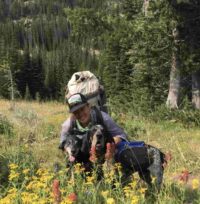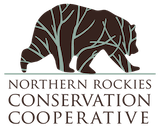Author: Molly Loomis Tyson
Organization: Yale Law School and Harvard Law School
Title: Cyber-Enabled Wildlife Markets and the Risk of Zoonotic Disease
The danger of wildlife transmitting viruses to humans, and vice versa, has existed as long as the interactions themselves. Zoonotic disease is likely referenced in the Bible and the Mesopotamian tablets dating back 40 centuries.Corona viruses, the genetic family responsible for the current pandemic, also appeared well over a thousand years ago.
The differences today, is the rate of population growth, habitat destruction, industrialized livestock production, illegal wildlife trade, and loss of biodiversity. These overlapping factors accelerate the potential for cross-species disease transmission. This risk is present not only in human-wildlife interactions but in the interplay of all species.
Considering the emphasis governments place on national security, the public health risks of zoonotic disease should beseen not merely as a “conservation/environmental issue”, but a global security, public health, human rights, and animal welfare issue.
An important, yet under-investigated aspect of wildlife trade’s relationship to zoonotic disease transmission is the Internet, and related cyber technology. Cyber technology is a relatively new variable. There is no question that a shift has and is occurring from traditional physical markets to cyber-markets and related technologies. The sheer quantity of wildlife-related transactions now occurring electronically points to the question of not if, but when a cyber enabled transmission will occur, if it hasn’t already.
There is no doubt that wildlife-public health laws better suited to our era of online global markets and cyber-enabled transactions are desperately needed. Furthermore, considering the speed at which the landscape is changing, a multi-pronged approach defining this not as a public health or wildlife issue, but an integrated issue, is needed. Updated laws, advanced technology for monitoring online activity; streamlined structures for sharing data internationally; and international governmental teams dedicated to the intersection of wildlife, public health, and criminology, particularly financial crime, are greatly needed.
Constitutive, foundational problems must also be addressed such as the psychology that is motivating purchases of wildlife and products despite the environmental and public health issues. Wildlife trade has been present for millennia. Cyber-space is simply the most recent enabler making this social process more efficient and wide reaching than ever before. The other key difference is that we now have a better understanding of what creates the conditions for zoonotic disease transmission to humans. Preparation for zoonotic transmission, and attempts at changing human behavior, are critical components to any solution.
——–
The above abstract is from my recent paper, Cyber-Enabled Wildlife Markets and the Risk of Zoonotic Disease. This is a chapter in a larger forth coming publication about the risks wildlife markets pose for the transmission of zoonotic disease.

Molly Loomis Tyson has lived in the Tetons since 2001, working in various roles as a writer, educator, mountain guide, and climbing ranger. Molly’s areas of interest are the intersection of conservation, recreation, and health, including problem solving and communication as it pertains to human-wildlife conflict and public land management. She is also passionate about using connection to place (“sense of place”) to instigate environmental advocacy and protection. Visit MollyLoomis.com to learn more about writing, workshops, editorial consulting, and speaking engagements.
